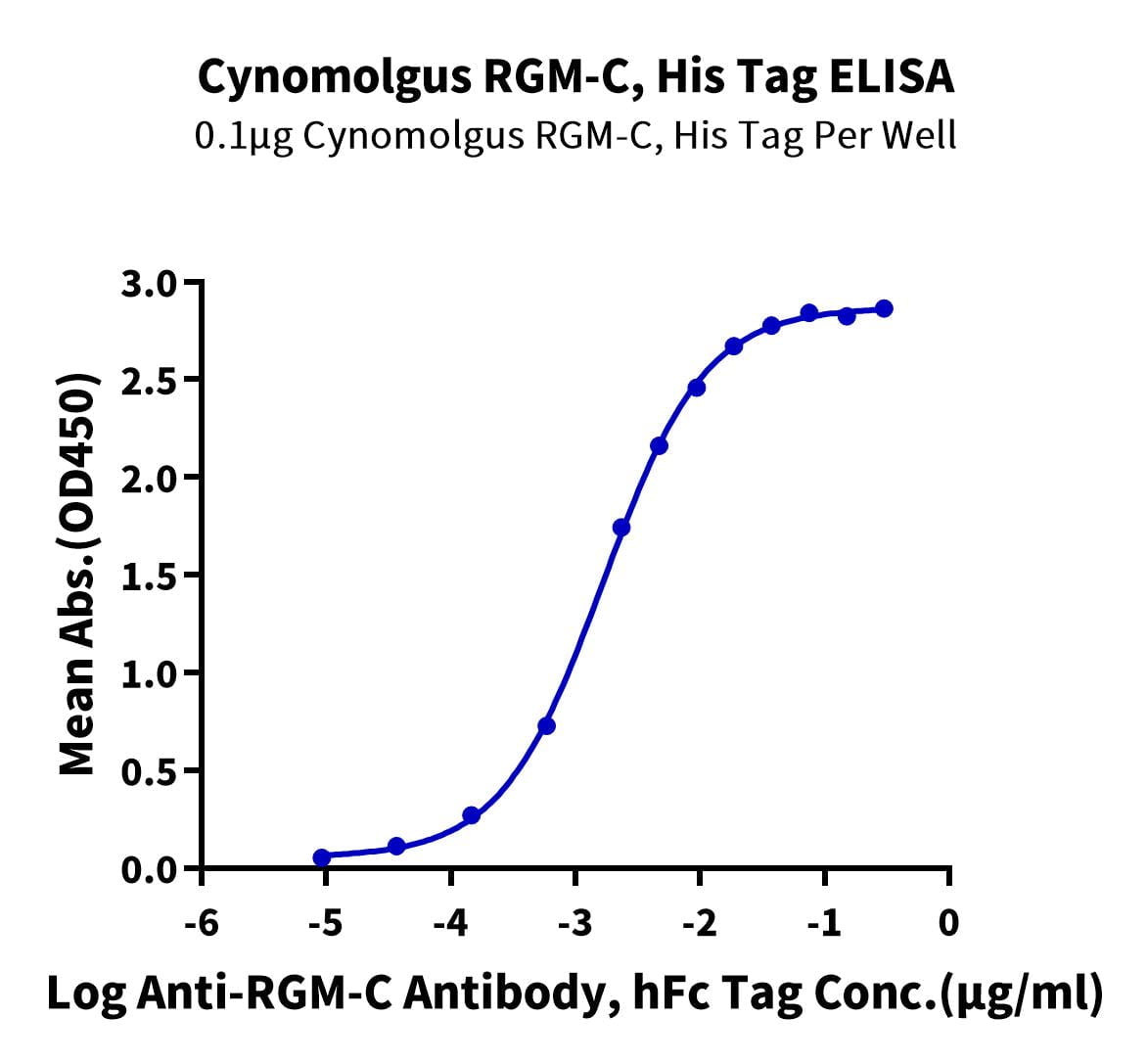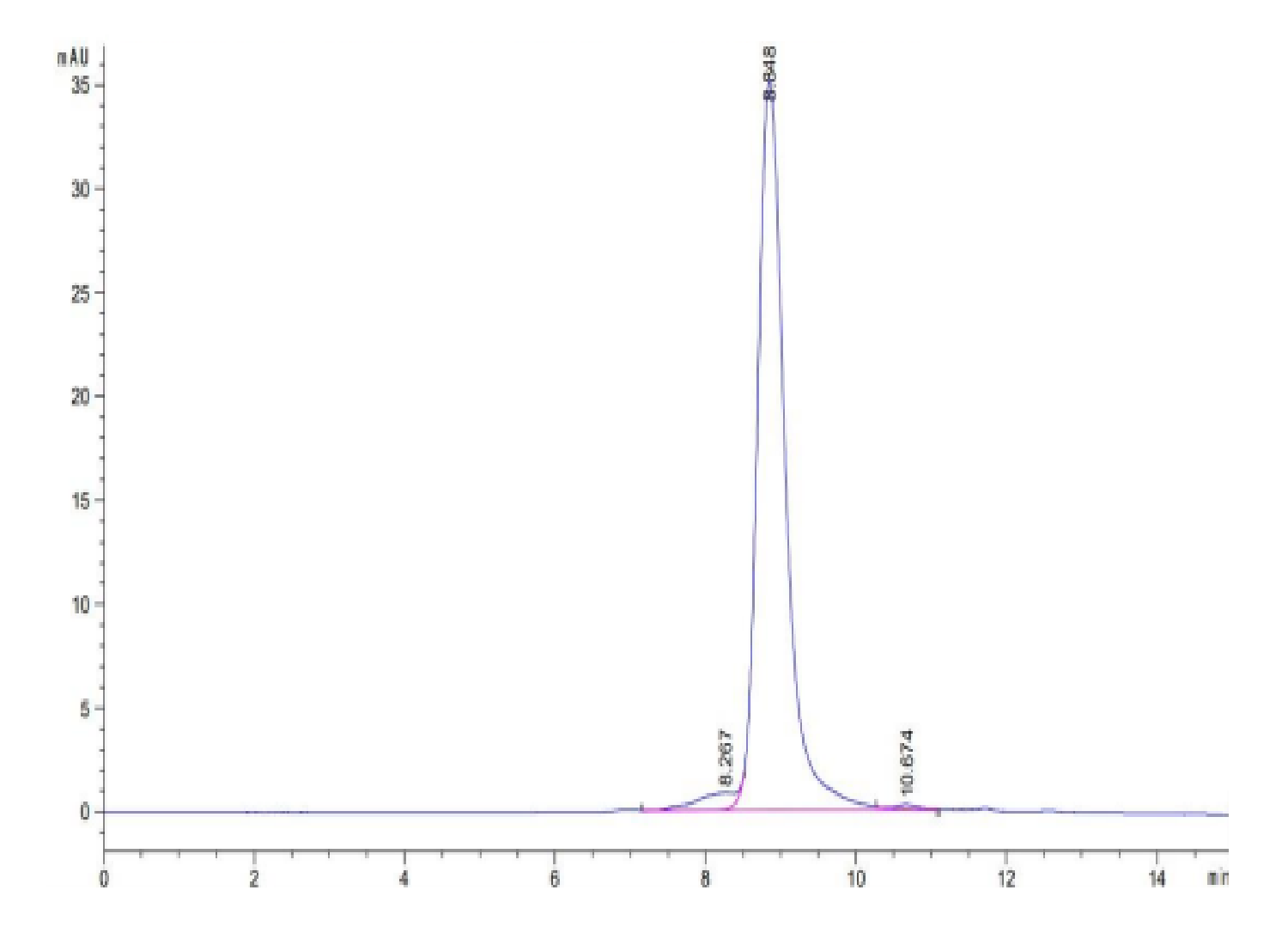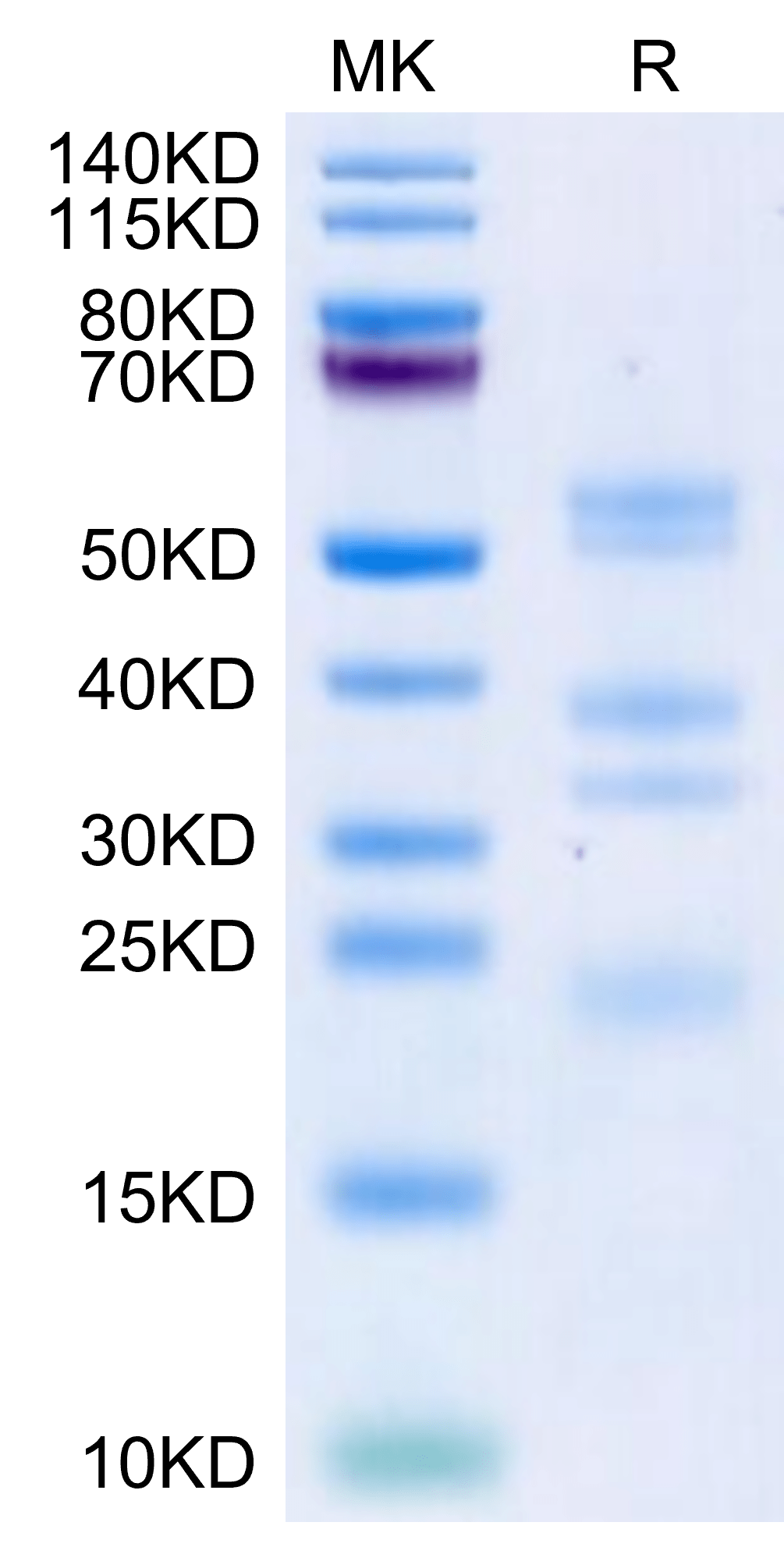| Weight | 1 lbs |
|---|---|
| Dimensions | 9 × 5 × 2 in |
| accession | XP_005542141 |
| express system | HEK293 |
| product tag | C-His |
| purity | > 95% as determined by Tris-Bis PAGE;> 95% as determined by HPLC |
| background | RGM gene family ('Repulsive Axonal Guidance molecules' A, B and C), both RGM A and B are mostly expressed in central nervous system, while RGM C is exclusively expressed in all striated muscle and in the myocardium. RGM A and B appear at every level of the developing neural axis, where they colocalize to a large extent in the mantle layer, although only RGM A appears in the neuroepithelium, and only RGM B in the peripheral nervous system. |
| molecular weight | The protein has a predicted MW of 40 kDa (mature)&26 kDa (C-terminus peptide)&14 kDa (N-terminus peptide). Due to enzyme lysis and glycosylation, the protein migrates to 50-60 kDa&30-40 kDa&20-25 kDa based on Tris-Bis PAGE result. |
| available size | 100 µg, 500 µg |
| endotoxin | Less than 1EU per μg by the LAL method. |
Cynomolgus RGM-C Protein 2675
$315.00 – $1,050.00
Summary
- Expression: HEK293
- Functional: Yes (ELISA)
- Amino Acid Range: Gln36-Asp401
Cynomolgus RGM-C Protein 2675
| protein |
|---|
| Size and concentration 100, 500µg and lyophilized |
| Form Lyophilized |
| Storage Instructions Valid for 12 months from date of receipt when stored at -80°C. Recommend to aliquot the protein into smaller quantities for optimal storage. Please minimize freeze-thaw cycles. |
| Storage buffer Shipped at ambient temperature. |
| Purity > 95% as determined by Tris-Bis PAGE |
| target relevance |
|---|
| RGM gene family ('Repulsive Axonal Guidance molecules' A, B and C),both RGM A and B are mostly expressed in central nervous system, while RGM C is exclusively expressed in all striated muscle and in the myocardium. RGM A and B appear at every level of the developing neural axis, where they colocalize to a large extent in the mantle layer, although only RGM A appears in the neuroepithelium, and only RGM B in the peripheral nervous system. |
| Protein names Hemojuvelin (Hemochromatosis type 2 protein) (Hemojuvelin BMP coreceptor) (RGM domain family member C) |
| Protein family Repulsive guidance molecule (RGM) family |
| Mass 45080Da |
| Function Acts as a bone morphogenetic protein (BMP) coreceptor (PubMed:18976966). Through enhancement of BMP signaling regulates hepcidin (HAMP) expression and regulates iron homeostasis (PubMed:18976966). {ECO:0000269|PubMed:18976966}. |
| Subellular location Cell membrane {ECO:0000250}; Lipid-anchor, GPI-anchor {ECO:0000250}. Note=Also released in the extracellular space. {ECO:0000269|PubMed:25156943}. |
| Tissues Adult and fetal liver, heart, and skeletal muscle. {ECO:0000269|PubMed:14647275}. |
| Structure Interacts with BMP2 and BMP4 (By similarity). Interacts with BMP6 (By similarity). Interacts with BMPR1B (PubMed:16604073). Interacts with TMPRSS6 (PubMed:18976966, PubMed:19357398). {ECO:0000250|UniProtKB:Q7TQ32, ECO:0000269|PubMed:16604073, ECO:0000269|PubMed:18976966, ECO:0000269|PubMed:19357398}. |
| Post-translational modification Autocatalytically cleaved at low pH; the two chains remain linked via two disulfide bonds (PubMed:25156943). Also proteolytically processed by TMPRSS6, several fragments being released in the extracellular space; regulates HJV activity in BMP signaling and thefore iron homeostasis (PubMed:18976966, PubMed:25156943). {ECO:0000269|PubMed:18976966, ECO:0000269|PubMed:25156943}. |
| Target Relevance information above includes information from UniProt accession: Q6ZVN8 |
| The UniProt Consortium |
Data
Publications
Publications
| pmid | title | authors | citation |
|---|---|---|---|
| We haven't added any publications to our database yet. | |||
Protocols
| relevant to this product |
|---|
Documents
| # | ||
|---|---|---|
| Please enter your product and batch number here to retrieve product datasheet, SDS, and QC information. | ||

















